The bustling capital of Sichuan province, Chengdu, boasts a fusion of modern and ancient cultures. This article will help you identify the best sites and activities in Chengdu for 2025. Sichuan cuisine and the cultural landmarks will satisfy even the most demanding tourists. There is much to explore, from the excellent Giant Panda Research Base and the stunning Jinli Ancient Street to Chengdu’s unique and rich teahouse culture. Whatever your interests, culinary or outdoor, Chengdu has something for everyone. This detailed recommendation gives you all the information you need on the rare sites and important places that make Chengdu unforgettable.
What Are the Top Chengdu Attractions to Visit?
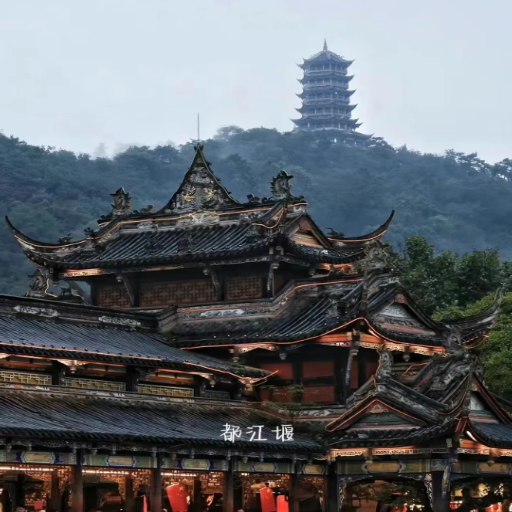
What Are the Top Chengdu Attractions to Visit
1. Giant Panda Research Base
Perfect for animal enthusiasts, the Giant Panda Research Base houses Chengdu’s iconic citizens. Guests can see how pandas live, learn about preservation policies and even spot infant pandas in the nursery.
2. Jinli Ancient Street
This sequence of historical architecture is excellent for casual walking. Appreciate the more intricate elements of Sichuan-style buildings, taste local food, purchase local crafts, and enjoy the bubbles of this ever-lively cultural center.
3. Wuhou Shrine
Wuhou Shrine is a well-known spot today as it is the resting place of Zhuge Liang, one of the renowned spymasters during the Three Kingdoms period. Walk through peaceful gardens, see historical remains, and appreciate the inheritance of one of Chinese folklore’s best-known characters.
4. Mount Qingcheng
Along with being a more modern marvel, Mount Qingcheng can also be explored by nature lovers looking for peace. These wood-covered hills became known as the cradle of Taoism, alongside ancient worship sites, hiking paths, and gorgeous sights.
5. People’s Park
This public park is one of the most crowded places in Chengdu, with people from different sides interacting daily. Spend time at the lake, check out a local tea house, or partake in collective exercises, dances, or cultural practices.
All the places mentioned above create a lively atmosphere in Chengdu, combining rich culture with stunning nature.
Exploring the Chengdu Panda Base
Chengdu Research Base of Giant Panda Breeding, or simply Chengdu Panda Base, is primarily built to attract wildlife lovers. The base has been built to study and save the giant Pandas and serves as a conservation and education center alongside its breeding program for these endangered animals.
Visitors come from far and wide to explore the beautifully assembled habitats where Pandas roam and play. The base has also done extensive research to allow cubs to be born right in the base. The base works conservationally, providing education on Pandas’ lives and explaining the crucial need for conserving wild Pandas. Baby Panda cubs can be observed at the nursery, alongside informative exhibitions where visitors can learn more about wildlife research and conservation.
Key Details:
- Location: Approx. 10 kilometers (6 miles) from downtown Chengdu
- Hours of Operation: 7:30 AM to 6:00 PM daily
- Best Time to Visit: Early morning, especially during feeding times (8:30 AM to 10 AM)
- Entrance Fee: Around 55 RMB (subject to change)
Visitors to the base are guaranteed a captivating experience, including observing the world’s most adored Pandas and supporting efforts to protect the ulterior resources.
Must-See: Leshan Giant Buddha
Covered under the UNESCO World Heritage Site list, The Leshan Giant Buddha is a stone statue carved in the shape of a Buddha and is the largest one in the world. The statue’s height stretches to an astonishing 71 meters (233 feet). It was built during the Tang Dynasty, between 713 and 803 AD. To control the hostile waters and to keep the ships that passed by safe, the statue was built to calm the waters. It is situated at the merging point of the Minjiang, Dadu, and Qingyi Rivers.
Key Details:
- Location: Leshan City, Sichuan Province, China (approx. 120 kilometers/75 miles from Chengdu).
- Dimensions:
- Height: 71 meters (233 feet)
- Width of shoulders: 28 meters (92 feet)
- Height of head: 14.7 meters (48 feet)
- Finger length: 8.3 meters (27 feet)
- Hours of Operation: 9:00 AM to 4:50 PM daily (last entry at 4 PM).
- Entrance Fee: Around 80 RMB (subject to seasonal changes).
- Best Time to Visit: To manage weather conditions, spring and autumn are much preferred; to avoid crowds, the early mornings of weekdays are suggested.
Tourists can experience the site from two angles: hiking trails allow for a closer view, while boat rides give a more panoramic view of the Buddha with the stunning rivers and terra-cement backdrop. Ancient temples alongside the lush greens add to the naturalistic beauty of the region. Apart from being an astounding sculpture, the Leshan Giant Buddha is considered an impressive worldview of Buddhism and ancient Chinese artistry.
Uncovering History at the Jinsha Site Museum
The Jinsha Site Museum serves as a gateway to ancient Chinese civilization. During my visit, I learned that it exhibits more than three thousand years of old materials from the Shu Kingdom. The excavations exposed a stunning collection of cultural relics, which included gold masks, jade jewelry, and intricately fashioned bronze pieces. The findings reflect the spirituality and craftsmanship of the ancient people. The museum is built in a way that preserves such treasures, ensuring long-term protection through a controlled climate and thorough display strategies. The museum is encircled with an immersive design that provides a modern cultural experience that puts history at the forefront. The museum helps you understand multi-dimensional culture, art, or archeology with unparalleled richness and authenticity.
When Is the Best Time to Visit Chengdu?
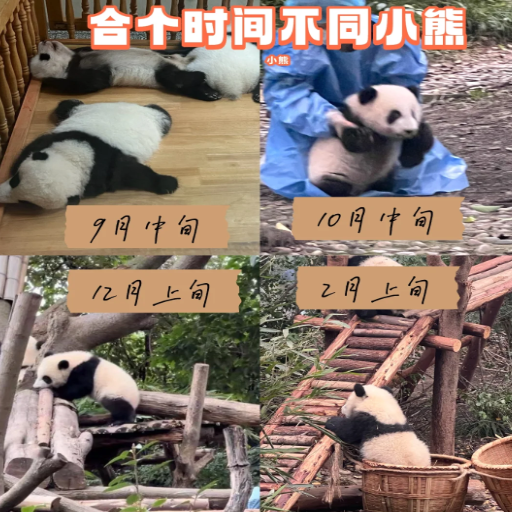
When Is the Best Time to Visit Chengdu
The ideal time of year to visit Chengdu is the spring (March to June) and autumn (September to November) months. The mildest weather is available during these months, making it ideal for strolling around the city, visiting its parks, or seeing its attractions, such as the Giant Panda Breeding Research Base and Mount Qingcheng. Chengdu also has fewer rainy days during these months than in the summer, making it easier to travel there.
Understanding Chengdu’s Climate and Seasons
Spring (March to June)
In Chengdu, spring is one of the best times to visit when the temperatures can range between 50 and 75 degrees Fahrenheit 32 (10-24 Celsius). There might be some light rain, but the city stays pretty dry during spring, with blooming flowers in various parts of the town, including People’s Park and Mount Qiongcjeng.
Summer (June to August)
Chengdu experiences hot and humid summers from June to August, with average temperatures between 75 and 90 degrees Fahrenheit (24 and 32 Celsius). Due to monsoons, the region receives the most rain at this time of year, receiving 6 to 8 inches, equivalent to 150 to 200mm. But even this season, places such as Chengdu Research Base of Giant Panda Breeding are famous for their large indoor spaces, relieving hot temperatures.
Autumn (September to November)
Crisp autumn in Chengdu is a delight to observe between September and November. One can enjoy the many sights and sounds that nature has to offer while seamlessly exploring the city. The relish, serenity, and beauty one experiences when visiting Wuhou Shrine or Du Fu Thatched Cottage is unmatched. The colorful foliage that blankets Chengdu and the clear autumn skies make it a must-visit during this period. Moreover, one can set aside outdoor explorations for November when temperatures soar to a staggering 78F (26C). Chengdu can be explored dimensionally during autumn as it is a favorable season to fixate on cultural activities.
Winter (December to February)
The Chengdu winter season lasts from December to February and is mild and soothing, with temperatures ranging from 35F (2C) to 55F (13C). Although the constant dampness can make things chilly, one can savor indoor activities such as exploring museums and devouring hot, spicy Sichuan cuisine. Winter can be a perfect time to lose yourself in the “city drift,” as it captures the essence of the cultural activities and scenic beauties coupled at this time.
Events and Festivals to Catch in Chengdu
Chengdu hosts many festivals and events all year round, emphasizing the city’s culture, history, and food. Here are some highlights of the fantastic Chengdu festivals:
1. Chinese New Year (January or February)
Like any other city in China, Chengdu is also decorated for the Chinese New Year. During this time, Chengdu is lively and offers local activities such as the traditional lion and dragon dance and fireworks displays. Families usually reunite to celebrate the holiday over Sichuan food, while tourists can enjoy temple fairs and cultural performances.
2. Lantern Festival (February or March)
The finale of the lunar new year is celebrated with the Lantern Festival. During the Lantern Festival, the streets and parks of Chengdu are filled with illuminated lanterns. The Jinsha site museum organized excellent lantern exhibitions during this period, and cultural shows offered tangayuan (glutinous rice balls) and other traditional foods.
3. Chengdu International Panda Lantern Festival (September to October)
Chengdu is incredibly well known for its creative panda lanterns, which were explicitly made for the panda lantern festival. The festival is held at locations such as the Eastern Suburb Memory, where light is combined with folklore music and dancing alongside the art installments to pay tribute to the city’s giant pandas.
4. Dujiangyan Water Releasing Festival (April)
This festival celebrates the Dujiangyan Irrigation System, which is a UNESCO site. Locals participate in dragon boat races, folk dances, and various ceremonies, remembering the sophisticated water management systems developed over 2000 years ago.
5. Chengdu International Food Festival (December)
This is a must for food enthusiasts, showcasing authentic Sichuan cuisine. Chengdu is famous for its street food, and visitors get the unique opportunity to participate in cooking competitions, street food fairs, and tasting sessions of Chengdu cuisine’s highlights, such as dan noodles and mapo tofu.
These festivals highlight Chengdu’s culture, showcasing this city’s spirit. Remember to confirm the dates since they usually change from year to year.
Planning Your Trip: Chengdu 2025 Calendar
If you’re considering a trip to Chengdu in 2025, I suggest considering the city’s seasons and events. From March to May, Spring offers natural sites like the Chengdu Research Base of Bastard Panda Breeding and mild temperatures, making it perfect for exploring. Summer brings the International Intangible Cultural Heritage Festival. Be ready for stressed hot conditions, though. From September to November, Autumn provides a cooler temperature that is excellent for food tours and scenic views. Sichuan Hotpot culture can be enjoyed in the Winter, offering fewer crowds to allow for genuinely enjoying the hotpot.
For travel technicalities, consider the following tips:
- Visa Requirements: Visa applications can be daunting; be sure that completion includes a passport valid for 6 months along with a recent photo and confirmed itinerary.
- Transportation: Chengdu has an impressive metro system, so explore the city when booking your flight. Be sure to book flights early, as festival periods can lead to overcrowded flights.
- Accommodations: If you wish to stay in traditional spots, the Wuhou District is perfect. In comparison, it is convenient if you want to stay in a more central Jinjiang District.
Whenever you plan your trip, be sure to keep in mind the significant events as you get closer to the day. With some careful planning, Chengdu can offer truly immersive experiences.
What Sichuan Cuisine Delights Should You Try?
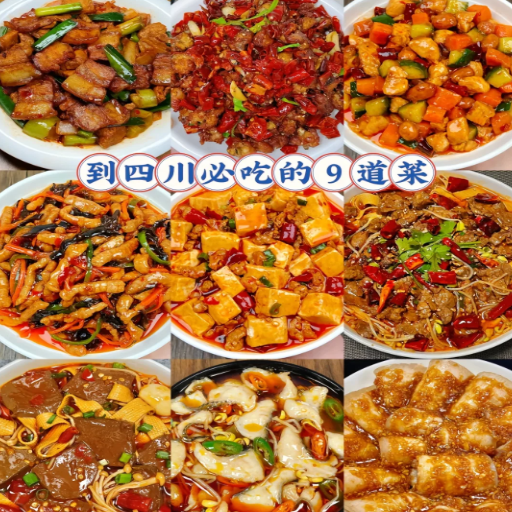
What Sichuan Cuisine Delights Should You Try
Sichuan cuisine is renowned for its bold flavors, distinctive use of Sichuan peppercorn, and a harmonious balance of spicy, savory, and aromatic notes. Here are some must-try dishes:
- Mapo Tofu: A flavorful combination of soft tofu, minced meat, and a spicy, numbing chili sauce.
- Kung Pao Chicken: A classic dish featuring stir-fried chicken, peanuts, and vegetables in a tangy, sweet sauce.
- Hot Pot: A social dining experience with a boiling pot of spicy broth to cook various meats, vegetables, and noodles.
- Dan Dan Noodles: Spicy noodles topped with minced pork, Sichuan pepper, and a rich sesame sauce.
- Twice-Cooked Pork (Hui Guo Rou): Slices of pork belly stir-fried with chili bean paste, garlic, and leeks.
These dishes represent the essence of Sichuan’s culinary artistry and are guaranteed to leave an unforgettable impression on any food lover!
Famous Chengdu Hotpot: A Culinary Experience
Chengdu hotpot is famous for its intense flavors and social eating. The journey begins by picking the broth base, which can be intensely spicy with Sichuan peppercorns or gentle with herbs. Some crucial aspects of preparing Chengdu hotpot are that the broth must be at 203°F(95°C) for the ingredients to cook evenly, which is a must for every hotpot.
A distinct setup of hotpot includes raw utensils cooked such as thinly sliced meats of beef and lamb, fresh vegetables of bok choy, mushrooms, lotus root, and some dipping sauces modified to suit everyone’s taste. Different types of food also have different requirements in terms of cooking time. Meats such as assorted dips would need between 30 and 60 seconds, while veggies would need 1 to 3 minutes to soften properly. The critical consideration is a balance of flavors, enhancing the experience of cooking and eating the food together.
To be genuine, the Chengdu hotpot must include fresh Sichuan peppercorns, chili oil, garlic, and some fermented bean paste, delicately adding complex tastes to the broth. Looking at the quality and how these ingredients are arranged guarantees that the meal represents how rich Chengdu is.
Exploring Local Flavors at Jinli
Chengdu’s Jinli Street is a center for traditional Sichuan food culture and style. It is famous for its local street food and snacks. Visitors can enjoy regional cuisine like Dan Dan Noodles, Sichuan Hotpot, and Ma La Tang with their signature numbing Sichuan pepper and hot chili. Guokui, San Da Pao, and Bobo Chicken are also popular snacks.
In addition, the street has a rich historical feel, with replicas of ancient buildings and red lanterns, giving it an exciting yet nostalgic ambiance. Jinli also boasts superb shopping options for local crafts, such as paper cutouts and shadow puppets, making it easy to take a piece of Chengdu culture home.
In Jinli, 10-50RMB per dish is a reasonable expense estimate, making it attractive to tourists and locals. The place is hectic during peak hours (evenings and weekends), so coming early in the morning or the afternoon can improve your experience. For tourists interested in Sichuan cuisine and local culture, Jinli represents the heart of these two things and makes it a must-visit place.
Top Spots for Authentic Chengdu Food
- Chen Mapo Tofu
You should check out Chen Mapo Tofu if you want authentic Sichuan spices. The company specializes in sizzling Mapo Tofu, which perfectly balances melted fragrant peppercorn (huajiao) with fermented bean paste (doubanjiang) and silky tofu. The dish has rich, spicy aromas that are very appetizing, and it is usually served fresh off the stove.
- Yulin Chuan Chuan Xiang
Hotpot lovers will appreciate Yulin Chuan Chuan Xiang as it offers unparalleled “Chuan Chuan” style hotpot where every ingredient, from mushrooms to meat and vegetables, is skewered by sticks and cooked in a steaming broth, which ranges from highly spicy to mild. It is recommended to try dipping sauces like garlic or sesame paste for more flavor.
- Chengdu Yinxiang (Wenshu Monastery Area)
This place sits right by the calm Wenshu Monastery, which creates a peaceful environment to enjoy your meal. Here, you will find fresh dumplings and steaming hot Dan Dan noodles (Tanzanian) prepared in classic Sichuan cuisine. You can enjoy a variety of traditional iconic snacks between 10-30 RMB, making them affordable.
From these few locations, you can piece together what the culinary heart of Chengdu offers, giving you an unforgettable food experience.
How to Plan Your Chengdu Itinerary?
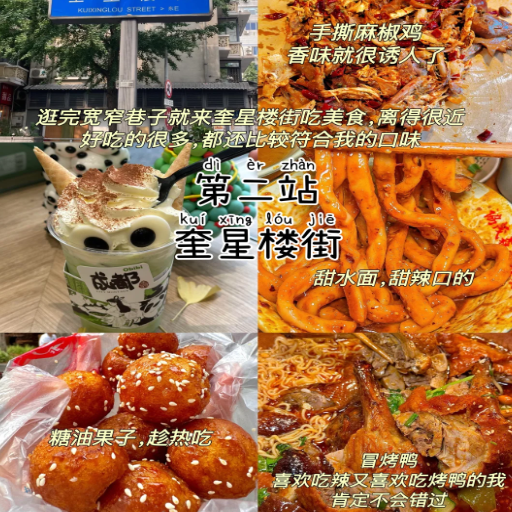
How to Plan Your Chengdu Itinerary
When planning an itinerary in Chengdu, it is essential to integrate culture, food, and leisure. Ensure to visit paramount locations like the Wuhou Shrine, Jinli Street, and the Giant Panda Breeding Research Base. Dedicate some time for a day trip to Leshan to see the massive Buddha statue. Incorporate food experiences by visiting famous snack streets and hot pot restaurants. Lastly, relax at People’s Park, where locals observe several customs while ‘people watching’ over tea. When creating your itinerary, consider a flexible schedule, enabling total engagement in the lively nature of Chengdu.
Classic Chengdu in Three Days
Day 1: Pandas and History
- Morning: Visit the Giant Panda Breeding Research Base (allow 3-4 hours). Arrive early (before 9 AM) for a better chance at catching the pandas when they are most active.
- In the afternoon, Visit Wuhou Shrine to gain insight into ancient Chengdu history and culture (1.5-2 hours).
- Evening: Walk through Jinli Street and appreciate the street performances as you taste the local street food.
Day 2: A Culinary and Leisure Experience
- Morning: Grab a breakfast from local vendors in Kuanzhai Alley and stroll around the historic courtyards (plan 2-3 hours).
- Afternoon: Enjoy a hot pot lunch at a local Sichuanese restaurant, and then go for a nice walk to People’s Park. Drink tea at Heming Tea House while cleaning your ears traditionally (use 2-3 hours).
- Evening: Attend a Sichuan Opera showcasing the renowned face-changing performance (around 1.5 to 2 hours).
Day 3: Day Trip to Leshan
- Morning: Go to Leshan (about 2 hours from Chengdu by car and even less by high-speed train) and visit the Leshan Giant Buddha. You can walk the excellent paths or take a boat ride along the river (this will take about 4-5 hours).
- Afternoon: Return to Chengdu and have lunch in Leshan. Try their delicious fish specialty.
- Evening: End the trip with dinner and shopping in Taikoo Li. This is a more modern part of Chengdu but has preserved some culture.
Following the above itinerary will give you a well-rounded experience of Chengdu’s nature, culture, and food.
Highlights of a Week-Long Chengdu Tour
With a week-long tour of Chengdu, you will see a lot of cultural history and cuisine to revisit. Below are some of the recommendations and highlights that I enjoyed, which can allow you to maximize your time in the city:
Day 1-2: City Exploration and Cultural Activities
- Jinli Ancient Street: This historic locale with traditional teahouses, artisan shops, and street food vendors requires a stroll of 3-4 hours. Expect to spend 3-4 hours here.
- Wuhou Shrine (Temple of Marquis Wu): This beautiful garden helps to remember and appreciate the legacy of the Three Kingdoms era (plan for 2-3 hours).
- Wide and Narrow Alleys (Kuanzhai Xiangzi): These modern, vibrantly decorated boutique stores, snacks, and cafes blend history with modernity in these Qing Dynasty-styled alleys (2-3 hours).
Day 3-4: Nature and Spiritual Landmarks
- Leshan Giant Buddha (UNESCO World Heritage Site): This is a magnificent 71-meter-high Buddha statue carved on a cliff. His Temple demonstrates impressive Tang Dynasty architecture. There are hiking options or a boat tour to see the statue from the river (2-hour drive from Chengdu). You can expect to hike for 4-5 hours on site.
- Mount Emei (Emeishan): Famed for its temple shrines, hiking paths, and beautiful flora and fauna. Take the cable car to the Golden Summit for the stunning panoramic view (Day excursion, 6-8 hours).
Day 5-6: Pandas and Culinary Adventures
- Chengdu Research Base of Giant Panda Breeding: The most famous animal in China is seen in a semi-natural setting. In the mornings, they are active and feeding (2-3 hours).
- Cooking Class (Optional): Under professional instructions, learn how to cook famous Sichuan dishes like Kung Pao Chicken and Mapo Tofu (3-hour session).
- Hot Pot Dinner: Chengdu’s spicy hot pot is unrivaled. The variety of food that could be cooked in broth and other flavorful sauces amazes all food lovers.
Day 7: Final Exploration and Relaxation
- Dujiangyan Irrigation System (UNESCO Heritage Site) is an incredible example of ancient engineering that is still in use. It is located about an hour outside of Chengdu and is excellent for a morning visit (3-4 hours).
- Qingcheng Mountain (Mount Qingcheng): This traditional Taoist area features lush green scenery. Attractions include a brief hike or a cable car ride with great views (3-4 hours).
- Taikoo Li Shopping District: A place for modern shopping, Sichuan food, and traditional Sichuan architecture all in one area.
Aspects and Essentials for the Trip
- Panda Base Tickets: Reservations can be made online, and the admission fee is usually around ¥55 (approximately $7.50).
- Transportation: It is advisable to take the high-speed trains to Leshan and Mount Emei. The one-way ticket costs between ¥ $50 and ¥ $100 ($7 – 14 USD). Private drivers can also be arranged for ease of travel.
- Weather: Spring and autumn is considered the best time of the year, with an average temperature between 15 and 24 degrees celcius.
- Packing Tips: Bring comfortable shoes for walking or hiking, an umbrella for the drizzle in Chengdu, and warm clothes for the changing temperatures.
- Local Currency: Most people and businesses can be paid with cash (RMB) or through mobile payment methods like Alipay and WeChat Pay.
The meticulously organized tour immerses you into the culture, scenery, and food of Chengdu, providing a superb week to experience the richness of Sichuan province.
Day Trips and Tours From Chengdu
There are fantastic day trips to discover the culture and nature of Sichuan Province from Chengdu. One popular place is the Leshan Giant Buddha, a UNESCO World Heritage Site only 1.5 high-speed train rides away. It costs roughly ¥80-100 for each ticket, and visitors are welcome to look at the intricate carvings and temples.
Another must-visit is Mount Emei, one of the Four Sacred Buddhist Mountains of China. This site is more appropriate for a multi-day tour because of its size, but high-speed trains and guided tours allow for a sight-packed day. The entry fees to the mountain range from ¥160-185, and the cable car ride to the top is an additional ¥120.
For those who love nature, Dujiangyan Irrigation System and Qingcheng Mountain are more suitable for shorter day trips. Both sit about an hour from Chengdu, and the irrigation system is one of China’s oldest water management projects, charging roughly ¥90 for entry. Qingcheng Mountain has lovely hiking trails and Taoist temples, which cost around ¥80.
Most tours cover travel logistics, ticketing, and guiding to make the overall experience as effortless as possible. Depending on your requirements, private drivers or guided group tours can frequently be customized to cover several places in one day. Remember to check the weather beforehand, wear suitable clothes, and pack some water for the hikes.
What Are the Best Places to Visit in Chengdu?
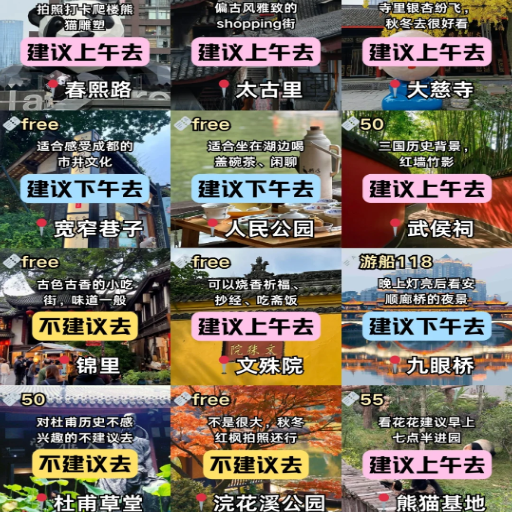
What Are the Best Places to Visit in Chengdu
Chengdu is widespread throughout the world, where cultural heritage meets natural beauty. When visiting Chengdu, one cannot miss the Chengdu Research Base of Giant Panda Breeding, where people can see panda bears in a life-like natural scene. Also on the list is Jinli Ancient Street, showcasing old Sichuan with antique buildings, local snacks, and shop crafts. History lovers will adore Wuhou Shrine, which details the famous Shu-Han period. A visit to Taikoo Li Chengdu will let one experience modern Chengdu with their shopping and dining while feasting their eyes on the beautiful integration of contemporary architecture with historical sites. These diverse destinations showcase Chengdu’s beauty, which makes the city so fascinating.
Exploring the Historic Monasteries
Chengdu is among the cities with significant past regions that house ancient monasteries, peaceful settings, and important cultural heritage. One of the more popular is Wenshu Monastery, a Buddhist temple with a traditional Chinese style, serene gardens, and antiquities like a statue collection and paintings on scrolls. The Baoguang Monastery is also remarkable; it dates back to the Eastern Han Dynasty and has a magnificent 13-pagoda, carving, and calligraphy. These monasteries get the most visitors from those who want to meditate or learn deeply about the history and religion of Chengdu. All visitors must verify the operating hours and observe the rules of the region they are visiting.
Modern Marvels in Downtown Chengdu
Chengdu is a city that combines old traditions and cultures with modern living and development, which is demonstrated by the lively city center, which is filled with new buildings. The modern Chengdu IFS International Finance Square is one of the distinguishing symbols. The complex, characterized by luxury shops, superb restaurants, and great entertainment, is represented by the IFS building, distinguished by a 100-meter-tall panda statue that seems to be climbing. This sculpture has become an unofficial photo zone. IFS has modern infrastructure and more than 210 thousand square meters of commercial area.
Another breathtaking masterpiece in the city center is Chunxi Road Pedestrian Street, which is famous for combining modern and old Chinese culture. This commercial district is ideal for shopaholics, having flagship stores, local boutiques, and Chengdu’s famous teahouses. Especially at night, it’s a lively space filled with neon lights, as the energetic atmosphere captures the city.
Chendu’s heart is a short distance from Chunxi Road, where you can find the famous Tianfu Square. This square combines cultural heritage with modern architecture and design. It has a giant statue of Mao Zedong, underground shopping malls, and a fantastic dancing fountain that will impress people of all ages. The square is accessible through the metro, making it a perfect tourist starting point.
These three contemporary marvels speak of how modern Chengdu has preserved its cultural heritage while taking giant leaps toward the future, giving tourists a taste of the city’s many sides.
Natural Wonders Near Chengdu
One of the most mesmerizing natural wonders is the Jiuzhaigou Valley, a renowned gem located approximately 330 kilometers away and a sight to behold. This valley is distinguished for its turquoise lakes, breathtaking waterfalls, and snow-capped mountains, showing nature’s charm and unmatched beauty. With an altitude from 2,000 to 4,500 meters, travelers must adequately prepare for height differences.
The last site this article will cover is Qingcheng, the cradle of Taoism. Mount Qingcheng is known for its untouched nature, ancient temples, and hiking trails. Here, one can genuinely appreciate cultural richness and nature at its finest.
Finally, the 71-meter-tall Leshan Giant Buddha, combined with the breathtaking Mount Emei, located 170 kilometers from Chengdu, is of religious importance and natural beauty. The towering image of the Buddha carved into the cliffside and Emei’s sacred temples among the fogbound forests are something out of a dream. With these views, one can fully appreciate this region’s sublime natural and spiritual beauty.
References
Frequently Asked Questions (FAQ)
Q: What are the top attractions in Chengdu City that I should not miss?
A: Chengdu City is known for its unique cultural and natural attractions blend. The top attractions include the Chengdu Research Base of Giant Panda Breeding, the Wuhou Shrine, Jinli Ancient Street, and the Chengdu Museum. These destinations offer a glimpse into the city’s rich history and vibrant atmosphere.
Q: How many days in Chengdu are recommended to explore the city thoroughly?
A: You should spend at least three to four days in Chengdu to explore the city thoroughly. This allows you to visit the major attractions, enjoy local cuisine, and experience the cultural activities unique to Chengdu.
Q: What are some of the top attractions around Chengdu that I should consider visiting?
A: Around Chengdu, you can find several top attractions, such as the Leshan Giant Buddha, Mount Emei, and the Dujiangyan Irrigation System. These sites are perfect for day trips from Chengdu and offer scenic beauty and historical significance.
Q: What is the best way to get around Chengdu City?
A: The best way to get around Chengdu City is by using the Chengdu Metro, which is efficient and covers most central areas. Taxis and buses are also available, but the metro is often the most convenient option for travelers.
Q: Can you recommend some fun things and activities in Chengdu?
A: Chengdu offers a variety of fun things and activities, including attending a Sichuan Opera performance, exploring the vast array of local markets, and trying spicy Sichuan cuisine. Additionally, a visit to the Chengdu Panda Base is a must for animal lovers.
Q: Is visiting the Chengdu Museum during my trip to Chengdu worth visiting?
A: Yes, visiting the Chengdu Museum is highly recommended during your trip to Chengdu. The museum showcases a vast collection of artifacts and exhibits that tell the history and culture of the region, making it an informative and enriching experience.
Q: What are some top picks for dining and experiencing local cuisine in Chengdu?
A: Chengdu is renowned for its spicy Sichuan cuisine. Top dining options include hotpot at local restaurants, sampling street food at Jinli Ancient Street, and visiting traditional tea houses. These experiences offer a delicious insight into the local culinary scene.
Q: What is the best way to reach Chengdu from other parts of China?
A: The best way to reach Chengdu from other parts of China is by air, with flights arriving at Chengdu Shuangliu International Airport. Alternatively, you can travel by high-speed train to Chengdu East Railway Station, which is well-connected to major cities across China.
Q: Are there any recommended Chengdu tours for first-time visitors?
A: Yes, several recommended Chengdu tours for first-time visitors include guided tours of the Chengdu Panda Base, cultural city walks, and day trips to nearby attractions like the Leshan Giant Buddha. These tours provide insights into the city’s rich heritage and natural beauty.